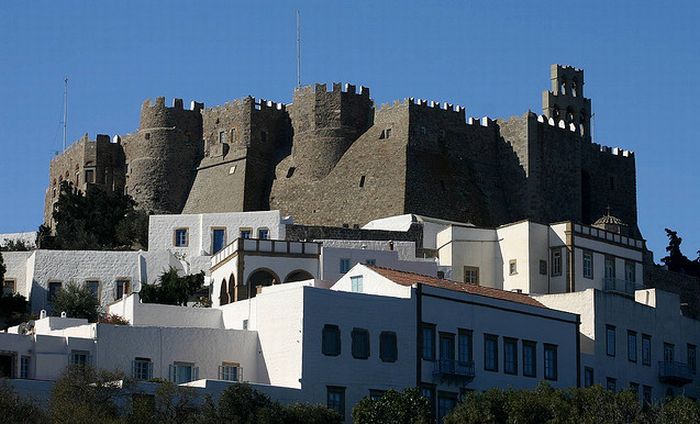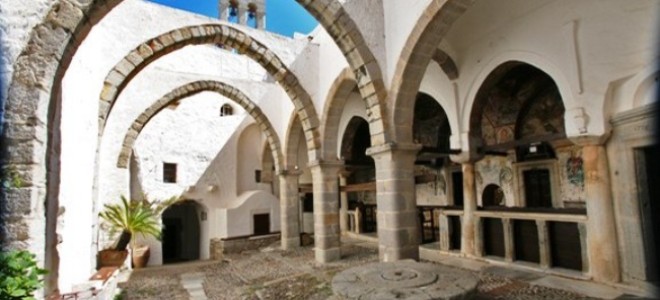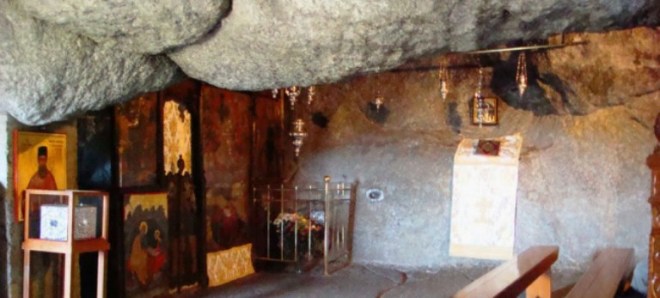
St. John the Theologian’s monastery in Patmos is a significant sacred destination for the whole Christianity and is considered to be the most important monastery of the Aegean Sea. Moreover, it constitutes a UNESCO World Heritage Site together with the Cave of the Apocalypse and the Historic Center (Chora) of Patmos.
St. John’s monastery was founded by St. Christodoulos. Between the 6th and the 9th century, Patmos was subjected to frequent raids by the Arabs; the islanders were either enslaved or deliberately abandoned the island, which was left deserted. A talented and educated monk, St. Christodoulos requested and, in 1088, was granted the island, by the Byzantine emperor Alexios I Comnenos, to establish a monastery in honor of St. John the Evangelist. St. Christodoulos stayed on the island until 1118, when he had to leave Patmos because of the pirate raids. But his vision continues to inspire enlightened monks, who got on with his work for the centuries following. By that time, an astonishing development of the holy island of Patmos begins. The establishment of St. John’s denoted the creation of a cultural, spiritual and religious center that stands as a touchstone for the whole Christendom.

Built on the top of a small mountain, the monastery dominates the island and the whole settlement that has developed around it. Archaeological findings attest that St. John’s was built in the place of an ancient temple of Artemis and an early Christian basilica. The monastery is surrounded by an uneven rectangular defensive enclosure dating from the 11th to the 17th centuries. Since the Byzantine period, there remain the Catholicon, the Dining hall and the cells.
The chapel of the Theotokos, in the south of the Catholicon, is of a rectangular floor plan, bejeweled with notable frescoes dating back to the late 12th century. NW of the Catholicon, there lies St. Christodoulos’s 17th century chapel, where a shrine with his incorrupt remains is located. The dining hall, NE of the Catholicon, is decorated with famed frescoes. The marble dining tables of the monks are also preserved.
The cells are set on the southern side of the fortress enclosure. In St. John’s, there are also 5 post-byzantine chapels: St. Basil’s, St. Nicholas’s, St. John the Baptist’s, SS. Apostles’ and the Holy Cross (1603). Two smaller ones are located outside the enclosure: St. George’s and St. Onuphry (1611).

The Holy Cave of the Apocalypse
The Cave of the Apocalypse lies in Patmos, approximately on the middle of the road from the port to Chora. Inside the cave, the rock was torn apart and out of three fissures symbolizing the Holy Trinity, God’s voice was heard dictating the text of the Apocalypse to the beloved disciple of the Christ; St. John the Evangelist was in exile on the island, together with his disciple St. Prochorus, in the late 1st century.
The holy book of the Apocalypse, which concludes the Holy Bible, is an important text for the whole Christian world.
The cave was made into a site of worship by the founder of the monastery, St. Christodoulos. Nowadays, one has to descend a lot of steps to enter the small church that lies attached on the left of the majestic cavern.

Telephone: +30.2247.020.800













